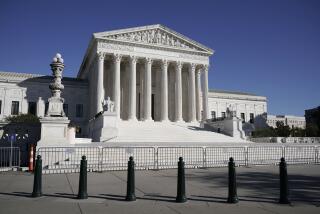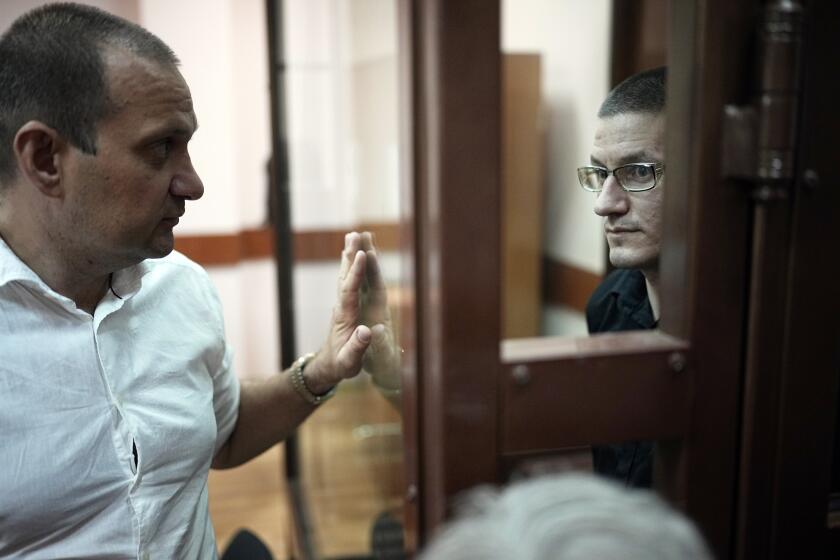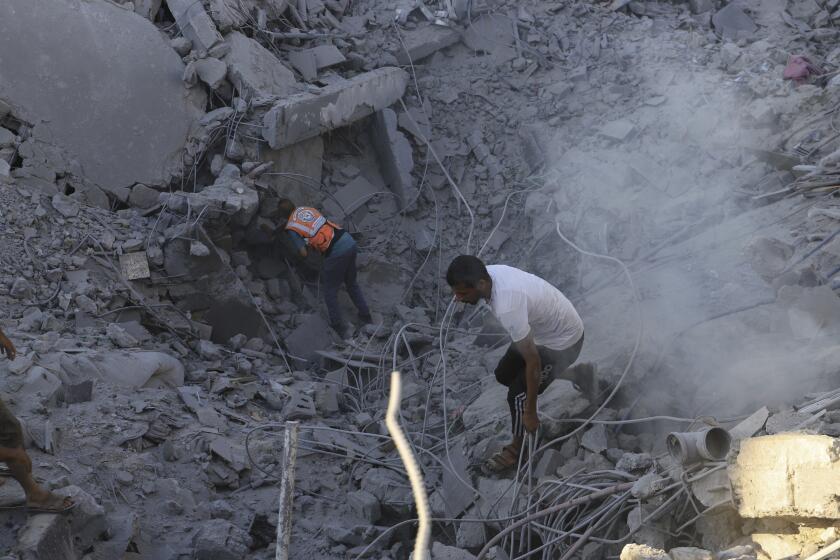31 Chernobyl Fatalities Confirmed; 135,000 People Evacuated
Soviet officials confirmed Thursday that the Chernobyl nuclear disaster caused the deaths of 31 people and sent 203 others to the hospital with acute radiation sickness. It also forced the evacuation of 135,000 people from the disaster zone, they announced for the first time.
The officials also said that the government is debating whether to change a policy of placing nuclear reactors in or near cities, although Chairman Andronik M. Petrosyants of the State Committee on Atomic Energy said that no decision has yet been reached on siting policy for future nuclear plants.
The information was provided in a news conference previewing the Kremlin’s official report next Monday to the International Atomic Energy Agency in Vienna.
As outlined in an official summary circulated earlier this month among the IAEA’s 110 member governments, the report blames Chernobyl workers for blunders that it said triggered the disaster.
Nearly four months after an explosion at the Chernobyl plant’s No. 4 reactor spread radioactive contamination around the world, the radiation level at the reactor site is still too high for workers to go near it, the officials said.
They said that Chernobyl technicians committed a series of errors but that their biggest mistake was shutting off emergency cooling systems for almost 12 hours before the April 26 explosion.
While they put heavy stress on human error, one official said that changes in reactor design are being considered to prevent workers from switching off automatic safety systems as they did at Chernobyl.
At least 17 officials have been dismissed or reprimanded as a result of the catastrophe.
At first, the Kremlin failed to report the accident, delaying an announcement for nearly 72 hours while radioactivity spread over Scandinavia and Eastern Europe. It later provided more details, and the report to the IAEA is intended to provide a full explanation of the causes of the accident and follow-up decontamination measures.
The disaster “has hurt the Soviet nuclear power program badly,” Petrosyants said in a briefing for reporters. But he also vowed, “The lessons of Chernobyl, of course, cannot be unheeded.”
Valery A. Legasov, first deputy director of the leading nuclear energy institute, listed six mistakes that he said were committed while Chernobyl workers were conducting an experiment to see whether turbo-generators could be kept running under certain emergency conditions. But he said the test was poorly designed, that it neglected elementary safety precautions and that technicians conducting the experiment failed to heed obvious danger signals.
Legasov listed these mistakes:
--The workers failed to obtain enough spare control rods to lower the reactor’s power.
--The reactor was operating at power far below the 700 megawatts prescribed for the experiment.
--Two reserve pumps were started in addition to six pumps normally used, speeding up the flow of coolant and creating air bubbles that interfered with the cooling process.
--Gauges for water and steam pressure were disconnected.
--The automatic shutdown system was turned off.
--The emergency cooling system was shut off, which Legasov said was a violation of “the most sacred rule.”
If the cooling system had been working, Legasov said, there would have been only limited damage, even if the other five mistakes had occurred.
The reactor designers, he added, had never anticipated that such a series of errors could be committed and therefore did not try to devise safeguards against them.
“Is this the human factor or a design error?” he asked a reporter who questioned whether the Chernobyl staff deserved all the blame.
The reactor, known as RBMK-1000, is widely used in the Soviet nuclear power program. Other reactors of the same design were kept operating after the Chernobyl disaster, although three others at the Chernobyl site have been shut down since the accident.
Two of the reactors there--Nos. 1 and 2--will be restarted later this year, Legasov said. Soviet newspapers have reported previously they would be working by October.
The third reactor, located very near the devastated No. 4 that is being entombed in concrete, apparently will remain idle because of the high radiation levels nearby.
Leonid A. Ilyin, chief of the Health Ministry institute supervising the care of Chernobyl patients, said that 22 of the 203 persons stricken with radiation sickness were in the worst-off category.
Three of them, he said, remain in serious condition, while 14 have burns covering more than 80% of their bodies. The prognosis for the others is favorable, Ilyin added.
In the past, Soviet officials have reported that 92,000 to 100,000 people were evacuated from the most hazardous areas around Chernobyl. Ilyin said that the total number of evacuees was 135,000.
Those removed from their homes were checked at hospitals, he added, but later were discharged. Their prognosis is “very favorable,” Ilyin said, although they will receive an annual medical checkup for the rest of their lives.
Yuri A. Izrael, chairman of the State Committee on Hydrometeorology and Environmental Controls, said the contamination level around Chernobyl reactor No. 4 is still substantial, but he gave no precise figure.
He insisted that Moscow is “absolutely clean” of radiation but acknowledged that Kiev is “to a certain degree contaminated.”
The cities of Minsk and Gomel, in the neighboring republic of Byelorussia, also suffered from “partial contamination,” he said.
More to Read
Start your day right
Sign up for Essential California for news, features and recommendations from the L.A. Times and beyond in your inbox six days a week.
You may occasionally receive promotional content from the Los Angeles Times.






